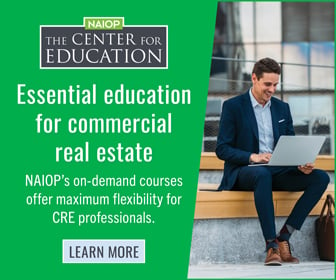Commercial real estate is in the midst of a digital revolution, and some of the biggest upheavals will affect professionals who work closely with property owners and tenants.
Winter 2018/2019 Issue
BridgePort I Logistics Center: From Abandoned Brownfield to Active Distribution Facility
By: Jeffrey Milanaik, Jonathan Pozerycki and Gabie StrbikA warehouse/fulfillment complex in New Jersey shows the economic potential for infill redevelopment in places once considered environmentally unsalvageable.
A Campus Project Packed with Extracurricular Challenges
By: Michael BlountAt N.C. State University in Raleigh, a building designed around a state-of-the-art textile machine also accommodates typical office and lab tenants, but getting to the finish line wasn’t easy.
Pondering Public Art? Legal Concerns and Artists Rights are Part of the Palette
By: Stephanie FrieseDevelopers must balance contracts, intellectual property issues, government involvement and other factors when commissioning pieces for a project.
Must-Read Articles

CRE Trends, Economics and More: A Wide-Ranging Conversation

IRS, Treasury Start to Clarify Qualified Opportunity Zone Regulations
- Business/Trends,
- Tax,
- ...

Big Data in Office Buildings Holds Promise Despite Privacy Worries

An Office Building Returns to its R&D Roots

Five Things Bankers Look for When Making CRE Loans
- Finance,
- Financiers,
- ...

The WELL Building Standard Continues to Evolve

The Challenge of Building in Tight Urban Spaces

10 Basic Mistakes Borrowers Make and How to Avoid Them
- Finance,
- Financiers,
- ...
RELATED RESEARCH AND PUBLICATIONS
Office Space Demand Forecast, Fourth Quarter 2025
From Static to Strategic: AI’s Role in Next-Generation Industrial Real Estate
- Report,
- Technology,
- ...
Industrial Space Demand Forecast, Third Quarter 2025
PERSPECTIVES
CEO on Leadership: John M. “Jack” Schultz, CEO, Agracel, Inc.
The Community Review Process Takes Time, Effort and Empathy
NAIOP's 2018 Developing Leaders Award Recipients Talk Tech Tools and Trends
Looking Ahead for NAIOP and The Industry
- Corporate,
- Advocacy,
- ...
ADDITIONAL ARTICLES
Movable Office Partitions: The Great Dividers
In the Ongoing Amenity War, Office Space is the New Battleground
The Sky's the Limit for Elevators in Today's Low- and Mid-Rise Buildings
Is Your Building Energy Star Certified? Better Check Again
There's Still a Need for Parking Audits
The Best Prescription for Leasing Medical Office Space
New & Noteworthy Projects
ARCHIVED ISSUES
View All Archived Issues Summer 2025 Issue
Summer 2025 Issue
Development’s summer 2025 issue explores experiential retail and the brick-and-mortar resurgence. Also featured: a modern warehouse campus in Toronto that honors its manufacturing heritage; a coalition of Oregon real estate organizations working to revitalize downtown Portland; and the creative capital stack strategy behind a mixed-use project in West Baltimore.
 Spring 2025 Issue
Spring 2025 Issue
The spring 2025 issue offers insights about where the office market might be heading over the coming year, explores the complexities of mission critical development, and provides detailed looks at two transformative mixed-use projects: The Bowl at Ballantyne in Charlotte and Baltimore Peninsula in Maryland.
 Winter 2024/2025 Issue
Winter 2024/2025 Issue
Development magazine’s winter issue delves into the evolving uses of artificial intelligence in the commercial real estate industry, from lease management and building operations to portfolio assessment and data analysis.
















